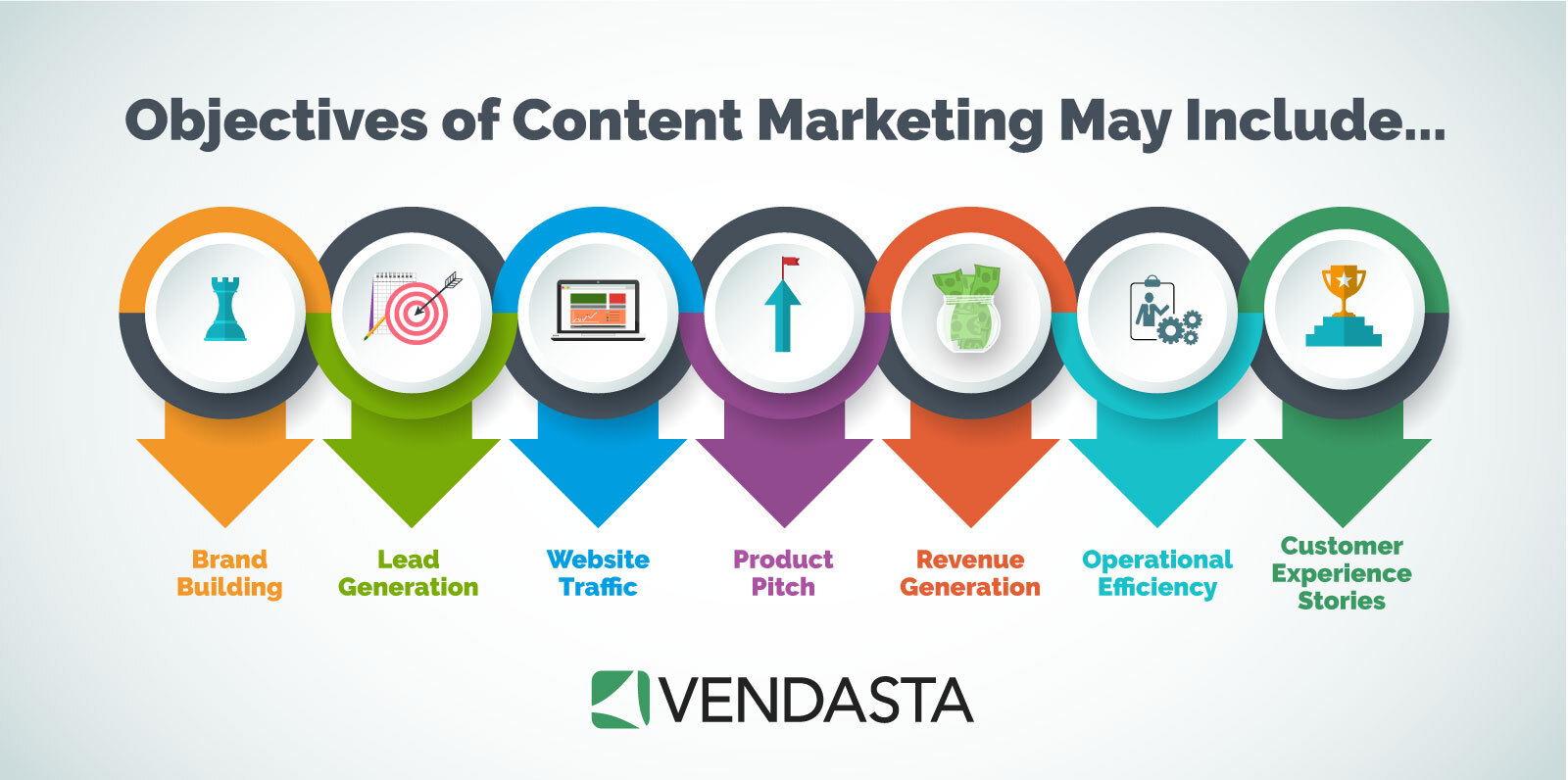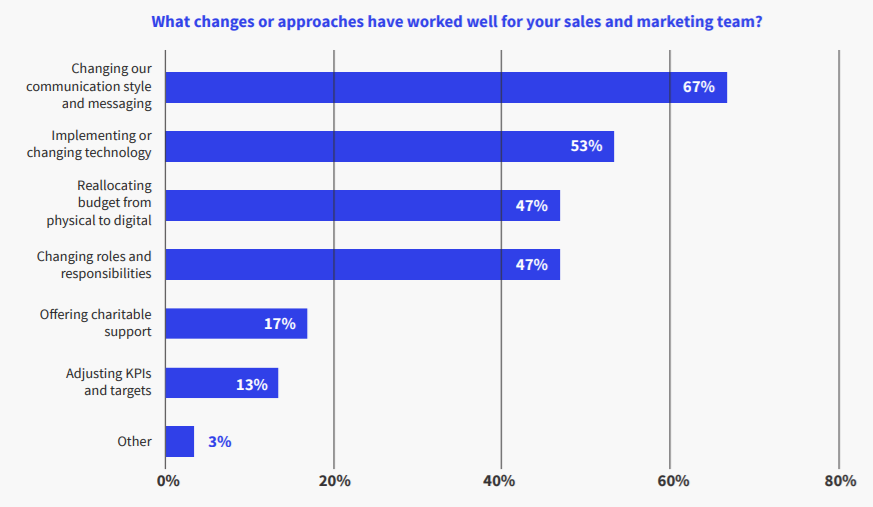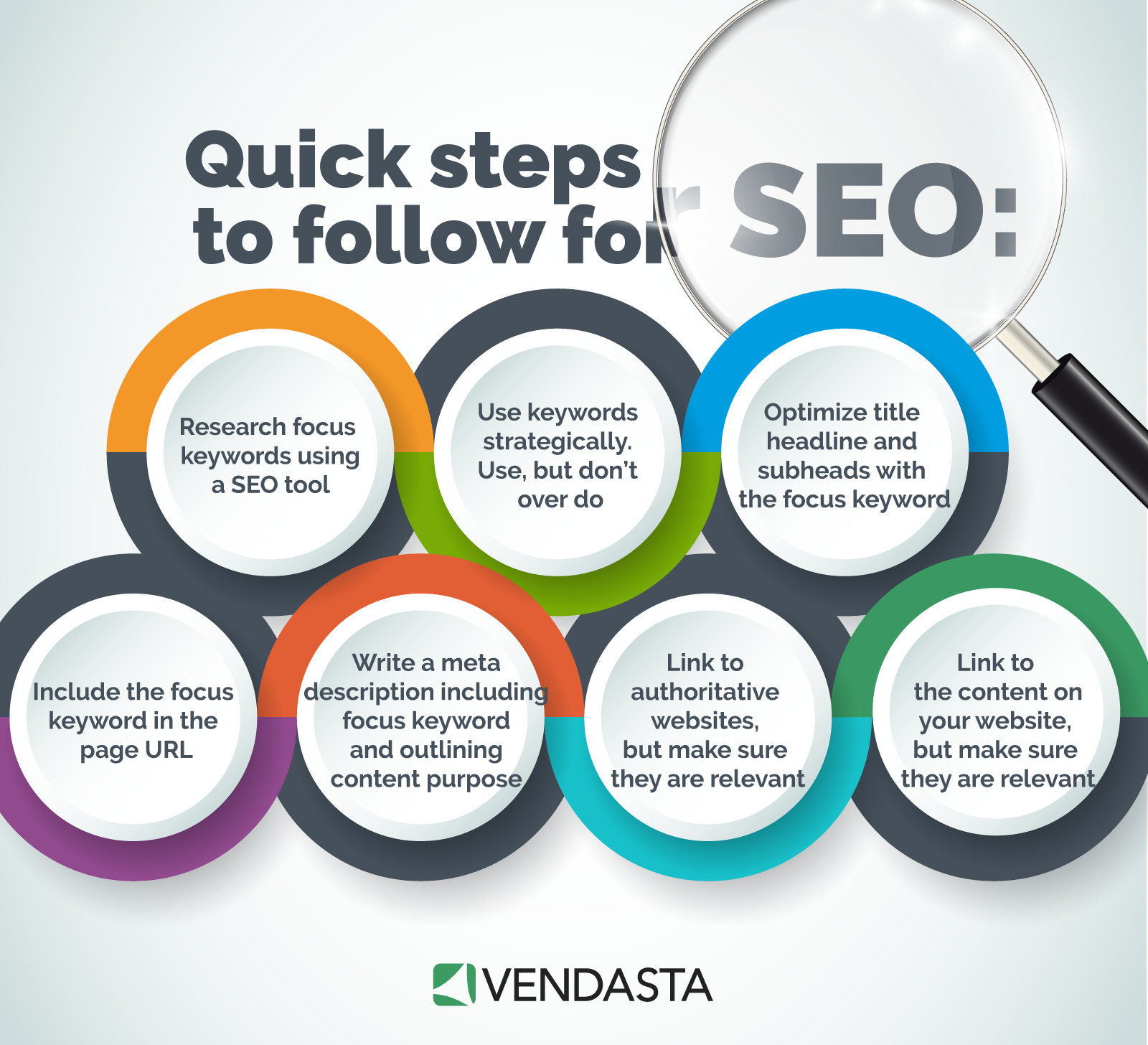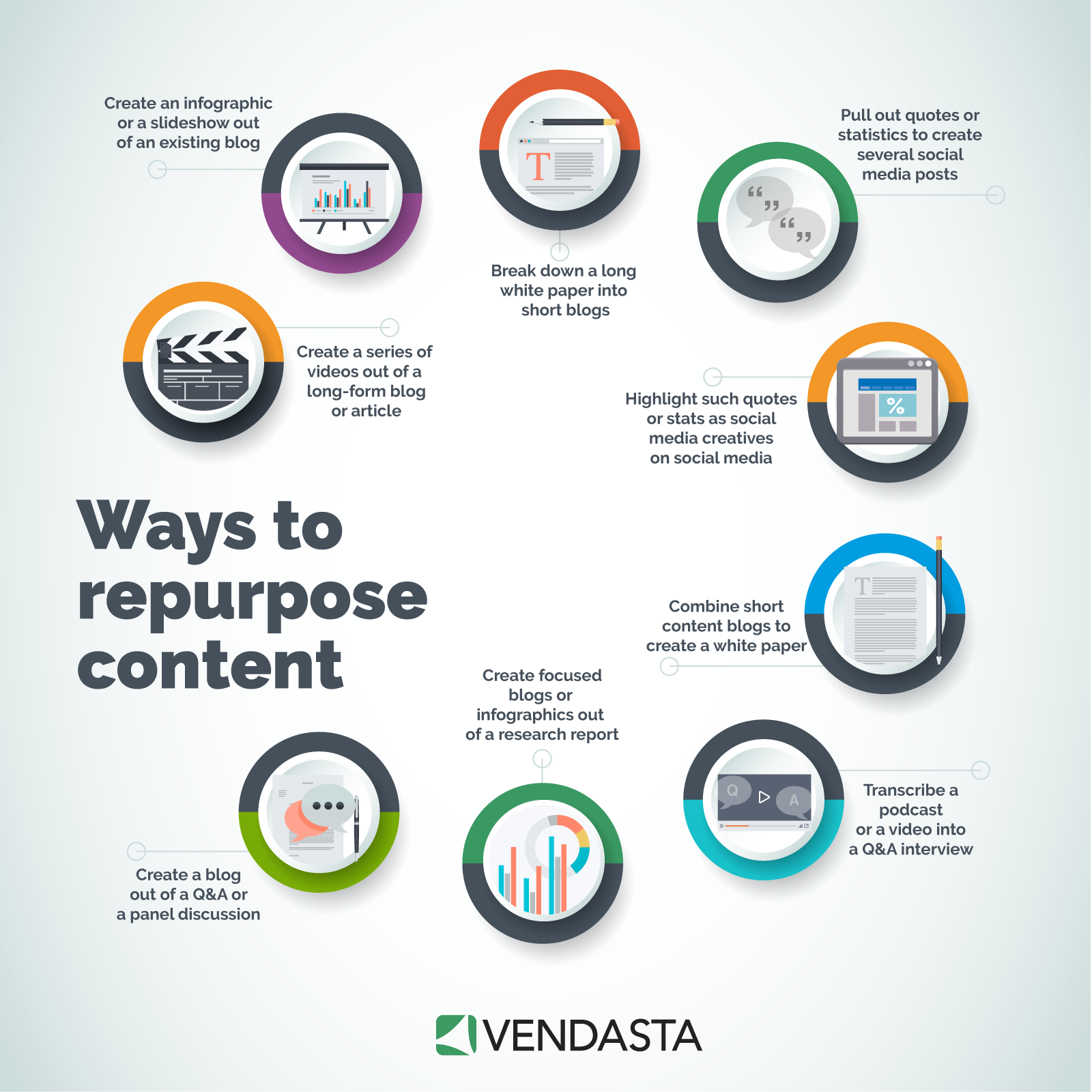13 tips for creating awesome marketing content
A good content marketing strategy attracts eyeballs, generates leads, builds online communities and relationships, which ultimately converts to sales.
This year, digital-first marketing went from “nice-to-have” to essential, according to ON24’s FastFWD B2B Marketing Trends Report for 2021. In a post-pandemic world marked by physical distancing, businesses needed to maximize online audience reach, marketers needed detailed insights into audience behavior, and everyone had to devise new topics, experiences and honeypots to capture audience attention.
So how do you create stellar content that drives your online business and stands out in the market?
You don’t need to write like Shakespeare or sound like Einstein. You just want to be relevant to your audience, and follow these simple steps, below, to grab their attention.
1. Understand your objectives
Are you writing marketing content for the pure fun of it? If that’s your primary interest then perhaps casual blogging should be your thing. Otherwise you should be creating marketing content to fulfill a business objective – even if it’s simply to build your own brand as a writer.
According to a study conducted by SEMRush, the top priorities for content marketers are generating quality leads, attracting website traffic, and improving brand reputation.
Therefore, the first step is to understand and underline the very purpose of your content marketing. Are you looking to generate sales leads? Or push your product in the market? Different goals demand different content marketing strategies.
A clearly defined objective and positioning should be the consistent message in your content, building the right image for your brand through all the content marketing channels.
Once you have identified that, answer the following questions.
- Who are your customers?
- What are they looking for?
- What problems are you seeking to solve?
- What is your brand’s USP?
- How do you want to highlight that?
- What is your competitive landscape?
- How do you score over your competitors?
2. Know your audience
Content marketing is not about delivering sales pitches, says Dan McLean, director of content marketing at Vendasta. You need to educate and inform. There is a sales component to content marketing, obviously. But it’s education aligned to your products, solutions, and technologies, rather than a sales and marketing pitch. “You need to be subtle. You have to ask: Who is your audience and what matters to them? Understanding your audience is the first step.”
Knowing your audience is the key to success in content marketing. If you don’t know who you are addressing, you have lost the game at the start. Audience understanding has two key elements.
Identify your ideal customer profile. Just as in sales, it’s important for content marketers to identify who is the ideal customer. They are a unique group of people out there who need what you offer, and this is the group you need to target. So, sit down with your sales team and learn from them who your ideal customer is. Then draw up buyer personas. Your content needs to be targeted towards these personas.
What is an Ideal Customer Profile and 6 Ways to Identify ICPs
Remember that an audience is not a customer — at least not yet. You need to keep in mind that your audience isn’t solely made up of buyers. Audiences could be anyone interested in the broad content you produce, unless you are focusing on product reviews in your content pieces. For instance, you could be a digital service provider writing about the importance of creating an online community or tips and tricks of posting on social media. Audiences are people looking to learn, be informed, given insights, and who interact with your content long before they intend to make a purchase. So think of your content as the honey pot that brings them into your fold.
[adrotate banner="153"]
3. Identify the topics/keywords
Build a list of topics that speak to your audience’s interest. Much of this will come from good old research about target audience and ideal customer profile.
Scan social media for your target audience and to understand your competitive landscape. Find out what type of content they consume. There are built-in analytics tools such as Facebook Page Insights, Twitter Analytics, and Instagram Insights, among others, to help with this investigation.
Online communities like Reddit and Quora are great places to listen and learn about what your target audience is asking.
Next, it always helps to do a thorough check of discussion topics on Google Search. Find out what type of content ranks in areas of interest for your prospects, how extensive these are, what subtopics are included. “This will help you come up with topic ideas aligned with assets Google has already deemed related, quality and worthy of ranking,” says Tudor Stanescu, SEO manager for Vendasta.
Google Search Console is an excellent tool for checking topics that already drive people to your website. Analyze the top queries, impressions, clicks, and click-through rates to identify topics that need your attention. For instance, according to SEJ Search Engine Journal, if a query drives thousands of impressions to your site each month, but the click-through-rate or CTR is less than 10 percent, then there is a lot of visibility to gain.
Unravel the Mystery of SEO Reporting with Google Search Console
There also exist several other tools, such as Google Keyword Planner, SEMrush, Ahrefs, FAQ Fox, Keyword.io and others, to help you come up with relevant content ideas and determine their potential for online success. Identify the exact phrases that are being searched for and use that knowledge to create your content accordingly.
4. Develop an editorial calendar
The next step is to develop an editorial calendar, which should list your content ideas, the appropriate format for each topic, plus the goals and strategic outcomes you hope to achieve.
“It’s also important that you categorize your content, so you’re being purposeful when you write. You need to be able to say ‘this thing that I’m writing about today is targeted for people at this stage of a buyers or customers journey’, McLean says.
Whether you want to publish new content everyday of the week or four times a month, a detailed strategic plan helps you determine when to publish content in a way that amplifies your brand messaging and elevates your keyword rankings.
“Think about the goals you want your content to accomplish, then set performance benchmarks with rankings, traffic, links, or social shares alongside your content deadlines,” says Manick Bhan, chief technology officer and founder, LinkGraph.
[adrotate banner="152"]
5. Focus on all the funnels top to bottom
While drawing up a content calendar, it is important to think about audiences, cadence, topics, the journey you want to take a reader along, as well as each piece of content and its purpose. At the end, you need to make sure you create content that speaks to every part of the customer or buyer journey to continually move prospects along at each stage. The more value and education they receive from your content, the more it moves them closer to a long-term relationship with your brand.
“In an inbound marketing context, content is really about providing thought leadership - education and insight that helps readers do their jobs and be successful. Great content builds trust with readers and draws people to your brand. They begin to see you and your brand as an informative source of learning for solving their business challenges and capturing new opportunities,” says McLean. “By becoming a sort of trusted advisor to your business audience, when the time comes for them to consider purchasing products and solutions to help their businesses, they’re apt to look first to those sources who’ve proven helpful in the past and whom they trust .”
It is essential to first understand the journey people take with your company. How they identify their problems, learn about your products, and make decisions, will dictate the type of content you need to create.
What are MSP Marketing Challenges and Six Ways to Fix Them
The journey begins at what’s in sales parlance is described as top-of-funnel or “awareness.” Content in this stage is more broadly focused and educational in nature. It speaks to the old adage of, “they don’t know what they don’t know,” so your audience may not even recognize they have a problem or challenge that needs to be addressed.. Or they are aware, but don’t know what to do about it.
Top-of-funnel content should create a sense of urgency and draw your target audience into your brand universe. Once they are in, it is essential to show them how they might think about and approach solving their business challenges. Again, by providing more education, but in this case, aligned to your company’s thinking and approach to solutions. Here you might offer tools, templates, tips, guidance, and other collateral that shows them a path forward. Once they’ve accepted the notion that there are immediate challenges they need to address in their businesses or opportunities to explore, then after providing them with ways of thinking and approaches to addressing these issues, it’s time to pitch them content that brings out how your brand can be of assistance when they are ready to take action.
“This is the ‘decision’ stage and it’s where your brand needs to articulate its value proposition and — more importantly — its differentiation,” McLean says. “This latter point is all about what you do better than other solution providers and/or what you do that others can’t.
“It’s a more sales-y discussion, but it’s not a marketing discussion. Don’t try to pitch me. Be real. Show me how you do it, don’t simply tell me you can do it.”
6. Show, don’t tell
Instead of touting how great your products are, show your customers how they can leverage your products to improve and grow their businesses, or if you are a consumer brand, how it changes a consumer life for the better. That helps them to make a connection with your brand.
“Customer testimonials, case studies, and success stories are all pieces of content that work really well with your audience at the bottom of the funnel. I’m showing you how to become more successful, I’m not telling you. It’s all about giving real examples of businesses that have achieved desired outcomes with your support, so that people can envision themselves using your solutions,” McLean says.
The idea here is to showcase that you actually know, do, and deliver what you claim and are not simply telling the customer and expecting them to take your word on face value.
Make it relatable to your audience by thinking of it as a story, where your business customer becomes the central character who emerges as the hero for their customers by likewise solving their problems and/or providing them with new opportunities.
“Listening to stories harkens back to our basic nature as people. We love storytelling and being told stories. When we were little kids, we grew up with our parents telling us stories. It’s a powerful mechanism. Don’t just spit out a bunch of facts. Tell stories! It’s more relatable — and convincing,” McLean says.
[adrotate banner="155"]
7. Cite sources and statistics
Facts and statistics are also an important part of your storytelling. Don’t make claims. Give the statistics and sources. For instance, according to ON24’s FastFWD B2B Marketing Trends Report for 2021, 48 percent of marketers think that lack of people or time is a key challenge to developing a digital honeypot, while other factors, such as lack of audience insight or data, lack of ideas, and the fact that organizations are too slow to create new experiences, were also found to be significant reasons (37 percent).
Give a chart, table or infographic, where possible. Visuals are an easy way to draw in the audience.
Qualified and authoritative sources validate your claims. In addition to domain experts, or a customer who has gone through the process, look for reports and authoritative statistics. For instance, the graphic below is an interesting source for what change in approaches marketing teams are facing.
8. SEO your content
Good content and search engine optimization (SEO) work hand-in-hand. There is no point to writing high-quality content if it doesn’t rank high on Google searches. According to BrightEdge, 53.3 percent of all website traffic comes from organic searches. This is why SEO is essential for improving the performance of online content.
For SEO, one of the most important things is matching user intent to the content you write, says Stanescu.
For instance, if you write an article and want to rank for “online store” as the primary focus keyword, you need to know the content Google is surfacing to users for that keyword. “If in the search results you see that a majority of results are articles about ‘how to start an online store,’ it should tell you that you need to create similar content, because Google has concluded that users are interested in reading that type of content based on continued testing of search results,” he explains.
On the other hand, if results show a majority of articles are tracking for the longtail keyword string, “best platforms to build an online store with,” then that’s likewise the topic your article should address in order for it to compete for that extremely valuable keyword.
Once you have determined the primary SEO keyword to use, create content around that concept. Then ensure that your content is optimized for organic search. Don’t worry, you don’t need to be an online scientist to figure this out.
9. Create in-depth content
The danger of simply creating content that ranks for SEO is that it’s liable to be flat and provide little value for your readers. Without attention to quality and by simply focusing on SEO, you’re not likely to get the desired outcome you seek.
“SEO states the requirements. Content marketing fulfills them. SEO demands content. Content marketing is content,” says Neil Patel, bestselling author and among the top web influencers. “There is no such thing as SEO without content. You need words, articles, substance, keywords, verbiage. I wince whenever I have to say it, because it’s so cliche, but it’s true: Content is king.”
If content is king, then quality content is emperor.
It needs to provide information your audience finds interesting and can relate to, and something which speaks to their business pain.
Additionally, your content should turn audience engagement into conversions. Open a channel with them with a call to action (CTA), whether it’s downloading an educational guide, signing up for a service, or simply to provide feedback.
Keyword stuffed content also raises a red flag with Google, and could lead to being penalized in many ways, including demotion in Google search ranking or even removal from search results.
10. Keep your content updated
Always keep your content updated. There’s definitely a shelf life to data or facts. That doesn’t mean you need to update content on a daily or monthly basis. But, if content is performing well, and significant changes have happened or new information has emerged over time, then it’s highly advisable to update your content.
Stanescu points out that it is also beneficial from an SEO point of view.
“Google rewards content that gets updated with brand new information, and it’s more valuable to update an existing article on the same URL instead of republishing a new one. Also, because everyone around you is constantly doing SEO, over time your articles will be surpassed in Google ranking by your competitors. By refreshing and adding new value to the article, you can re-establish ranking that might have slowly been lost to competitors,” he says.
11. Go beyond the written word
Different people consume content in different ways. While blog posts remain the most popular form of content for generating leads and attracting organic traffic, according to a report Content Marketing Statistics You Need To Know For 2021, emails, ebooks, and white papers are also important, especially further down the buyer’s journey.
A. Lee Judge, co-founder and chief marketing officer, Content Monsta, says he thinks the best content is videos and podcasts. These can be used to generate other types of content or to create conversation snippets. This means less time required in scripting/writing, more unique content, and better SEO performance. In the case of podcasts, it also provides a built-in co-sign from guest contributors.
Judge is right. Wyzowl’s recently published seventh edition of the State of Video Marketing report finds that the pandemic has impacted the video marketing landscape in contrasting ways. While video is generally seen as a more necessary tool by both marketers and consumers, many have seen video budgets restricted and plans shelved.
This trend is reflected in the consumer side of things as well. Deloitte’s Digital Media Trends, 15th edition, published in April 2021, finds video streaming is the second most popular choice for entertainment among consumers.
12. Repurpose your content
Once a content piece is published, think about repurposing it for a new audience who may prefer a different format.
It is also important to keep in mind that different types of content perform differently on various social media channels. For instance, while LinkedIn remains the place where professionals often read long format blogs and articles, a video or a slideshow may do better on Facebook for paucity of attention span among users, while Instagram is populated by Gen Z who typically dig into short videos, posters and infographics.
13. Build your authority
Content marketing allows you to share your knowledge about new developments and current trends that matter to your audience. Over time, as you position yourself as a thought leader in your industry, you may establish an authority status with your audience. Your platform automatically becomes the go-to source for information, not only about your products and businesses, but also with regard to questions they have about your industry.
As you build authority with your audience base, a website or an author’s credibility and demonstrated knowledge on a topic automatically builds authority and ranking with Google. That improves search rankings for your content.
Stanescu refers to Google’s E-A-T algorithm update. Simply put, to rank high on Google, you need to nurture your brand by building its Expertise, Authority, and Trustworthiness or E-A-T.
“It is important to improve your author authority by contributing to authoritative publications so that Google learns over time that you must have authority as well if you're contributing to publications it deems authoritative,” he says. It is Google’s way to protect searchers from receiving low-quality content in search.
[adrotate banner="154"]






